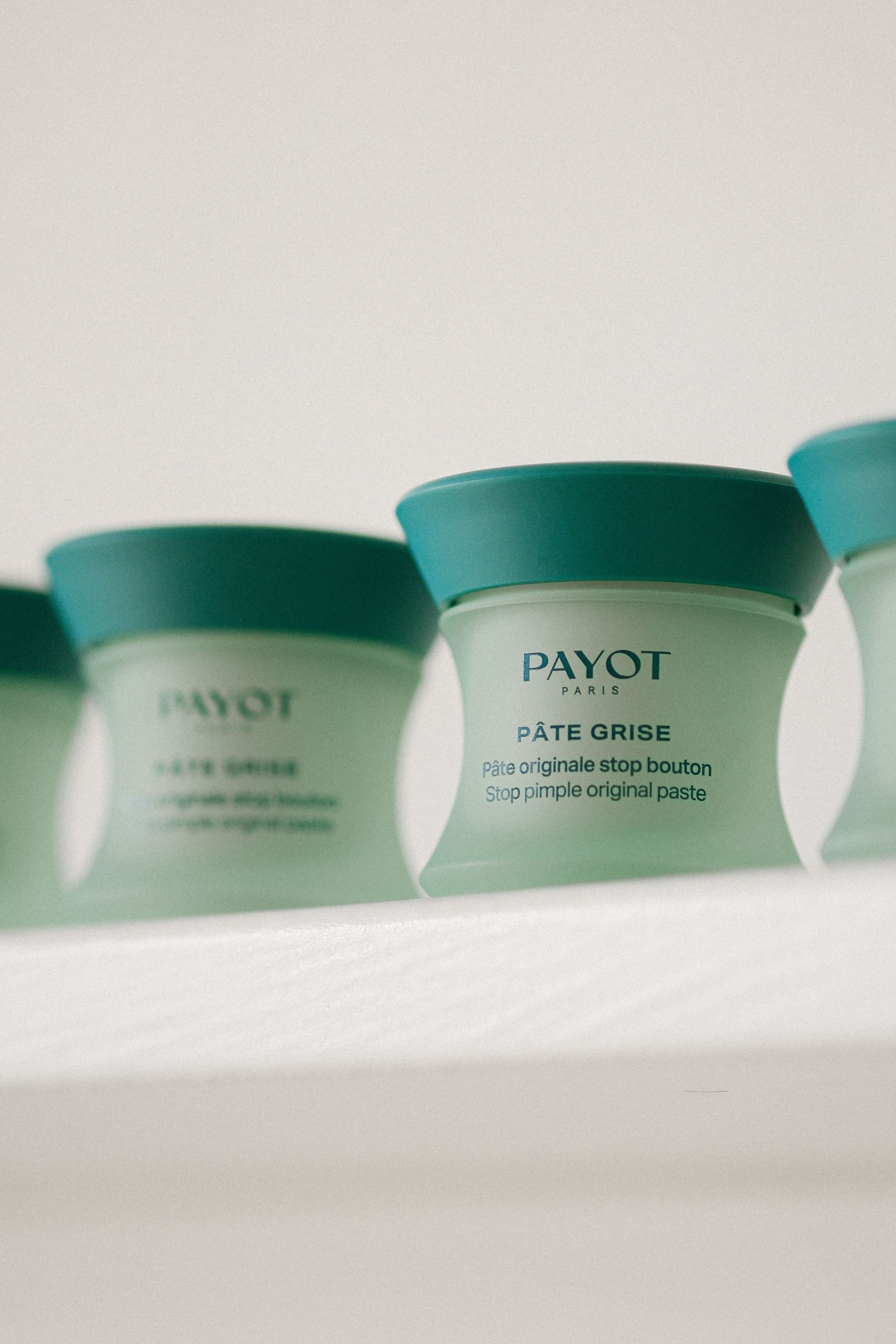
Not sure if your skin is combination or oily? Our experts break down everything you need to know about this skin type.
What is combination to oily skin?
When it comes to skincare, understanding your skin type is essential to choosing the right products—whether it’s a cleanser, toner, cream, serum, or mask—and building an effective routine. Among the various skin types, combination to oily skin is one of the most common, but also one of the most complex to care for... especially without Pâte Grise, the iconic blemish-control range trusted since 1920.
Oily skin is primarily defined by an imbalance in sebum production. Sebum is a natural substance produced by the sebaceous glands to protect and hydrate the skin. However, excessive sebum production creates an environment that encourages the growth of unwanted bacteria, leading to blemishes such as breakouts, enlarged pores, and blackheads.
Combination skin, on the other hand, is a mix of skin types—typically oily in the T-zone (forehead, nose, and chin), where sebum production is higher, and normal on other areas like the cheeks, where the skin remains more balanced.
Depending on the season or hormonal cycles, people with combination skin may experience fluctuations—ranging from oily to dry periods. These shifts reflect an imbalance in how the epidermis functions, which can be managed with skincare specifically formulated for this skin type.
Why does combination to oily skin produce more sebum ?
For many reasons. The primary cause of increased sebum production is hormonal, but certain habits can also disrupt the skin’s balance. Using overly harsh cleansers, for example, can irritate the skin, prompting it to defend itself by producing even more sebum.
That’s why it’s essential to use a moisturiser daily—even if you have oily skin. To stay healthy, your skin needs both hydration (water) and lipids (fats). Many people mistakenly believe that oily skin doesn’t need moisturiser because of the greasy film on the surface, which can be difficult to manage. However, skipping hydration only worsens the issue.
We recommend choosing lightweight moisturisers, such as emulsions or gel textures, that absorb quickly without weighing the skin down. PAYOT L’Émulsion Hydratante Matifiante, our day and night cream, is ideal for oily skin—it hydrates while mattifying the complexion, helping to reduce shine throughout the day.
-
Pâte Grise5 reviews4.166,67 €/LRegular price 25,00 €25,00 € Regular priceUnit price / per
-
Best-sellersPâte Grise567 reviews1.800 €/LRegular price 27,00 €27,00 € Regular priceUnit price / per
-
Anti-blemishGray PasteNo reviews49,90 €/LRegular price 49,90 €49,90 € Regular priceUnit price / per
54,00 €Sale price -
ImperfectionsPâte Grise1 review108 €/UnitRegular price 108,00 €108,00 € Regular priceUnit price / per
135,00 €Sale price
The causes of combination to oily skin
Although sometimes genetic—and therefore unavoidable—this skin type can also be triggered by external factors such as environmental conditions. Pollution, humidity, and even shifting climates can all affect the skin’s sebum production.
Oily skin is very common during adolescence and is often linked to hormonal fluctuations, especially during puberty, menstrual cycles, or pregnancy. These changes can lead to increased sebum production in some women.
Lastly, lifestyle plays a major role in the skin’s overall balance. Lack of sleep, a diet high in fats or sugars, and even stress can all contribute to excess sebum production.

Which facial skincare products should you use ?
Combination to oily skin needs the perfect balance between hydration and purification. The Pâte Grise skincare range is specially formulated to rebalance the skin’s microbiome, helping to reduce blemishes and reveal a fresh, radiant, and healthy-looking complexion.
Enriched with probiotics and glycolic acid, Pâte Grise products support the elimination of imperfections by regulating and restoring microbial balance. The keratolytic action of glycolic acid—found in products like the Sérum Peeling Rénovateur or Spéciale 5 Cica-Gel—helps to speed up the disappearance of unwanted breakouts.
